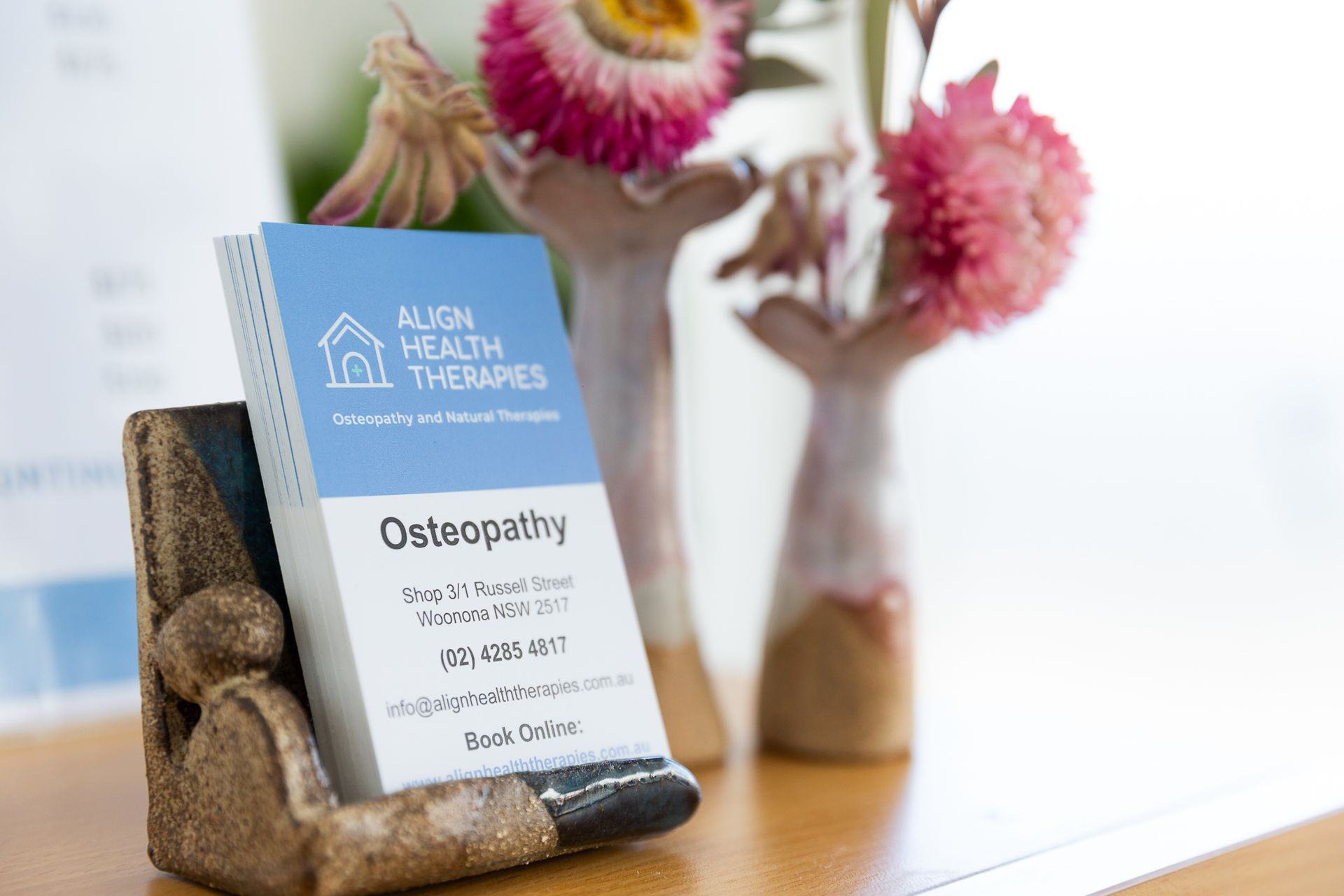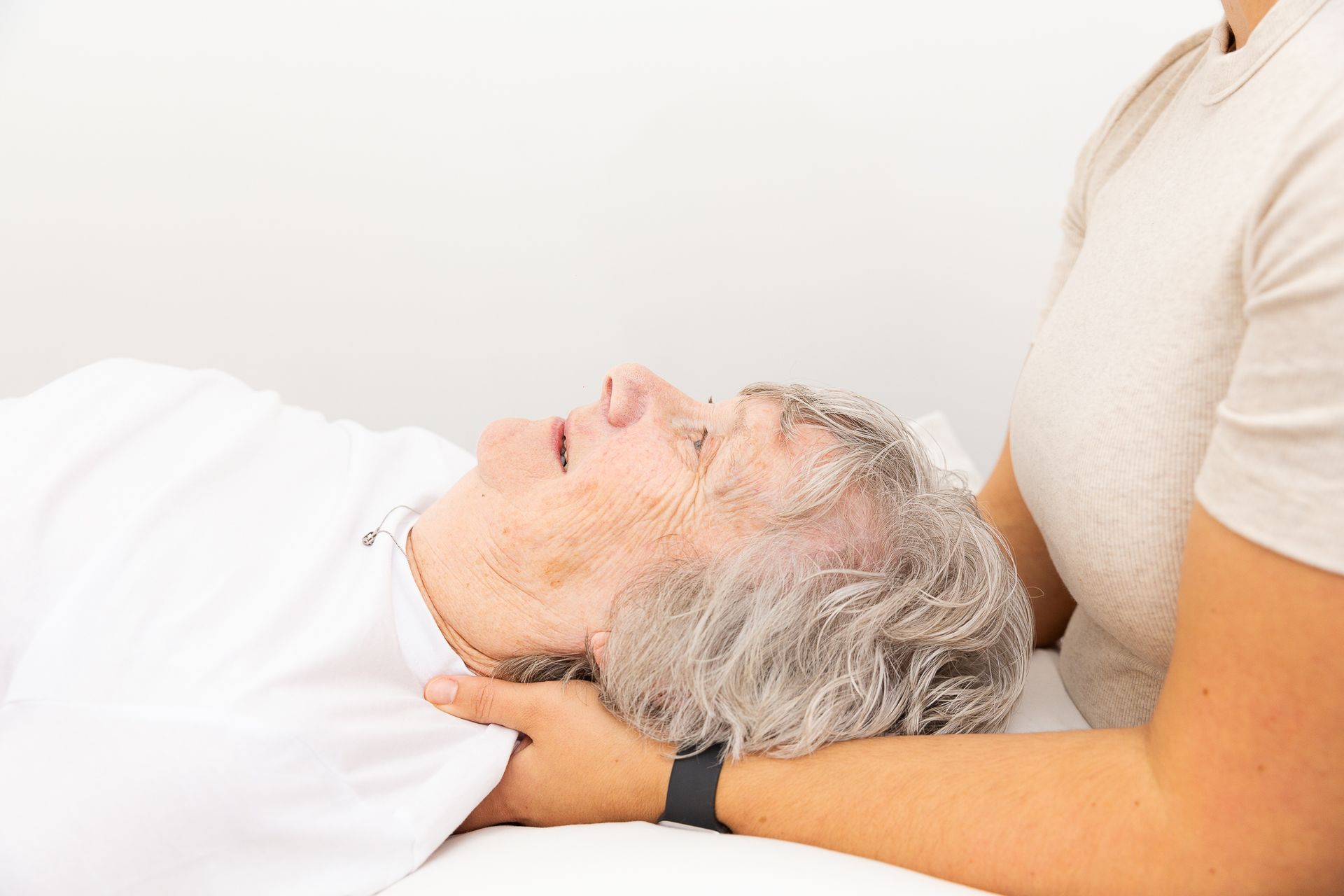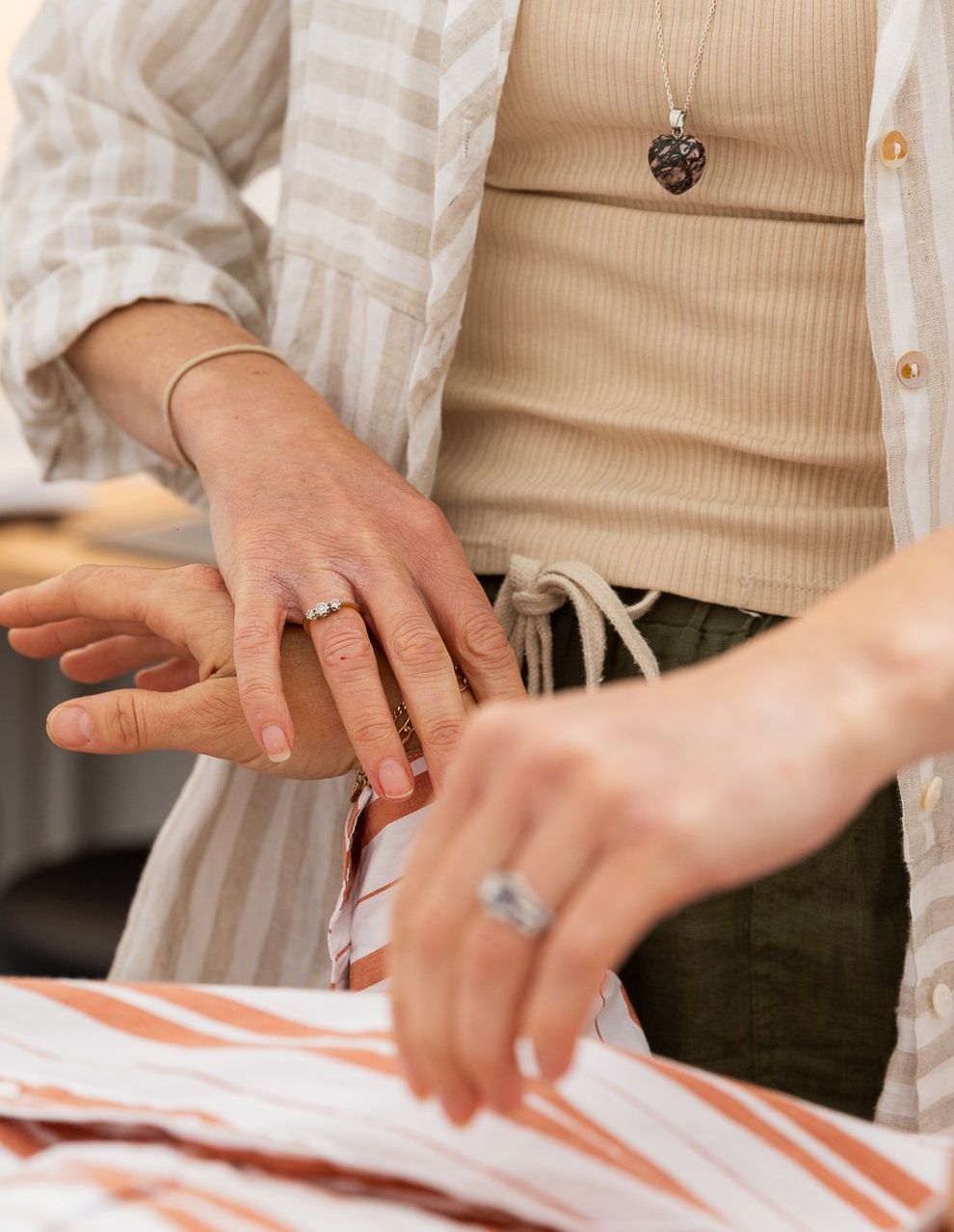We Provide Pain Management in Woonona
Conditions We Treat
At Align Health Therapies, we treat a wide range of ailments, including aches, pains and chronic conditions. Find out more about how we can assist you with pain management on this page or contact us on
(02) 4285 4817 to make an appointment. Our clinic is based in Woonona and we see patients of all ages throughout the surrounding area.
Headaches & Jaw Pain
-
Find Out More
Jaw pain can manifest in various ways and may be attributed to several underlying conditions. Tension headaches and migraines can often lead to jaw discomfort, as the muscles in the jaw area tense up during these episodes. Additionally, temporomandibular joint (TMJ) disorders, which affect the joint connecting the jaw to the skull, can cause chronic jaw pain and may result in difficulties with chewing, speaking, or even opening and closing the mouth properly. Identifying the specific cause of jaw pain is crucial for effective diagnosis and treatment.
Migraine
-
Find Out More
Migraines are a complex neurological condition characterised by intense and debilitating headaches. These headaches are typically accompanied by distressing symptoms such as nausea, and heightened sensitivity to both light (photophobia) and sound (phonophobia). Migraine attacks can be extremely disruptive to daily life, as they can last for hours or even days, affecting a person's ability to work, socialise or engage in regular activities.
Neck Pain
-
Find Out More
Neck pain is a prevalent discomfort stemming from a variety of sources. Muscle strain, frequently caused by overexertion or poor posture, is a common trigger for neck pain. Additionally, herniated discs, which involve the cushioning discs between the vertebrae in the neck slipping or rupturing, can also be a significant contributor to neck discomfort. Identifying the underlying cause of neck pain is essential for effective management and treatment.
Acute & Chronic Back Pain
-
Find Out More
Acute and chronic back pain can be attributed to a range of underlying conditions. Acute back pain often arises from muscle strains due to sudden movements or overexertion, while herniated discs occur when the soft tissue between vertebrae bulges out, putting pressure on nerves and causing pain. Chronic back pain, on the other hand, can result from conditions like spinal stenosis, where the spinal canal narrows, or osteoarthritis, which causes the degeneration of the spinal joints and can lead to persistent discomfort.
Disc & Nerve Compression
-
Find Out More
Disc and nerve compression can lead to a range of uncomfortable and debilitating symptoms. Herniated discs, for instance, occur when the soft, cushion-like discs between the vertebrae in the spine bulge or rupture, potentially causing sharp pain and radiating discomfort. Pinched nerves, on the other hand, can result from the compression of nerves by surrounding tissues or structures, leading to symptoms like numbness and tingling that often extend along the nerve pathway.
Pelvic & Hip Pain
-
Find Out More
Pelvic and hip pain can stem from various underlying conditions, each with its distinct characteristics. Hip osteoarthritis is a common cause, leading to pain, stiffness, and reduced joint mobility in the hip region. Bursitis, on the other hand, often results in localised discomfort and swelling, specifically around the bursae, fluid-filled sacs that cushion the hip joint. Lastly, pelvic inflammatory disease (PID) can cause a deep, aching pelvic pain that is typically associated with inflammation of the reproductive organs.
Pelvic Floor Dysfunctions
-
Find Out More
Pelvic floor dysfunctions encompass a range of conditions that can significantly affect an individual's quality of life. These conditions often involve issues such as urinary incontinence, where one may struggle to control their bladder; pelvic organ prolapse, which can cause organs to descend into the pelvic region; and pelvic pain syndromes, leading to chronic discomfort and pain in the lower abdomen and pelvis.
Pregnancy Support
-
Find Out More
Common conditions during pregnancy include gestational diabetes, preeclampsia and morning sickness. Gestational diabetes refers to elevated blood sugar levels during pregnancy, which can be managed through diet and medication. Preeclampsia is a potentially serious condition characterised by high blood pressure and organ damage, necessitating close medical monitoring. Morning sickness, while typically a temporary discomfort, can cause nausea and vomiting during the early stages of pregnancy.
Pre & Post Natal Care
-
Find Out More
Pre and postnatal conditions encompass a range of physical challenges that women may experience during and after pregnancy. Musculoskeletal discomfort is a common issue, often due to the strain placed on the body during pregnancy, which can lead to back pain, pelvic pain, and other discomforts. Pregnancy-related pain may also include conditions like sciatica or round ligament pain, which can affect mobility and comfort. Postpartum recovery involves addressing the physical and emotional changes that occur after childbirth, with a focus on regaining strength, healing and addressing issues such as diastasis recti or perineal tears.
Postural Aches & Pains
-
Find Out More
Postural aches and pains are often a result of sustained poor posture habits, which can lead to muscle imbalances and persistent discomfort. Over time, incorrect posture can place undue stress on certain muscles and joints, potentially leading to chronic pain or stiffness in the affected areas.
Breathing Dysfunction
-
Find Out More
Breathing dysfunction encompasses a range of respiratory issues, including conditions like asthma and chronic obstructive pulmonary disease (COPD), which can significantly impair the ability to breathe comfortably and efficiently. Additionally, dysfunctional breathing patterns can contribute to breathing difficulties, often stemming from stress, anxiety, or inadequate breathing technique.
Arthritic Pain Management
-
Find Out More
Arthritis encompasses a range of conditions, with osteoarthritis and rheumatoid arthritis being among the most common culprits, leading to joint pain and inflammation. Osteoarthritis typically arises from the gradual wear and tear of joint cartilage, resulting in pain and stiffness, while rheumatoid arthritis is an autoimmune disorder that triggers inflammation in the joints, causing persistent discomfort.
Chronic Pain Management
-
Find Out More
Chronic pain, characterized by persistent discomfort lasting for an extended period, often stems from conditions like fibromyalgia or neuropathic pain. Fibromyalgia is a complex disorder associated with widespread musculoskeletal pain and tenderness, while neuropathic pain is typically linked to nerve damage and can lead to constant, shooting or burning sensations.
Knee & Foot Issues
-
Find Out More
Knee and foot issues encompass a wide range of potential conditions. Knee osteoarthritis is a common cause of knee pain, characterised by the deterioration of joint cartilage and the inflammation of the knee joint. On the other hand, plantar fasciitis primarily affects the foot, causing heel pain due to the inflammation of the plantar fascia tissue. Achilles tendonitis, which affects the Achilles tendon in the ankle, can result in discomfort, stiffness, and even sharp pain in the back of the heel.
Sporting Injuries
-
Find Out More
Sporting injuries encompass a wide range of physical ailments that can occur during athletic activities. These injuries may involve sprains, which affect ligaments and typically result from overstretching or tearing of these connective tissues. Strains, on the other hand, impact muscles and tendons and can arise from excessive stress or overuse. Additionally, fractures and ligament tears are common sports-related injuries that can be caused by sudden trauma or repetitive strain on specific body parts.
Shoulder, Elbow & Hand Pain
-
Find Out More
Shoulder, elbow, and hand pain can encompass a range of conditions, each with its unique set of symptoms and underlying causes. Rotator cuff tears are often responsible for shoulder pain, typically occurring due to overuse or trauma, resulting in discomfort and limited arm mobility. Tennis elbow, on the other hand, appears as pain in the elbow region, often arising from repetitive motions, and can be particularly challenging for individuals engaged in activities that strain the forearm muscles. Meanwhile, carpal tunnel syndrome is a common cause of hand pain, stemming from the compression of the median nerve in the wrist, which may lead to tingling, numbness, and weakness in the hand.
SITE LINKS
OUR SERVICES
TRADING HOURS
- Monday
- -
- Tuesday
- -
- Wednesday
- -
- Thursday
- -
- Friday
- -
- Saturday
- -
- Sunday
- Closed



























